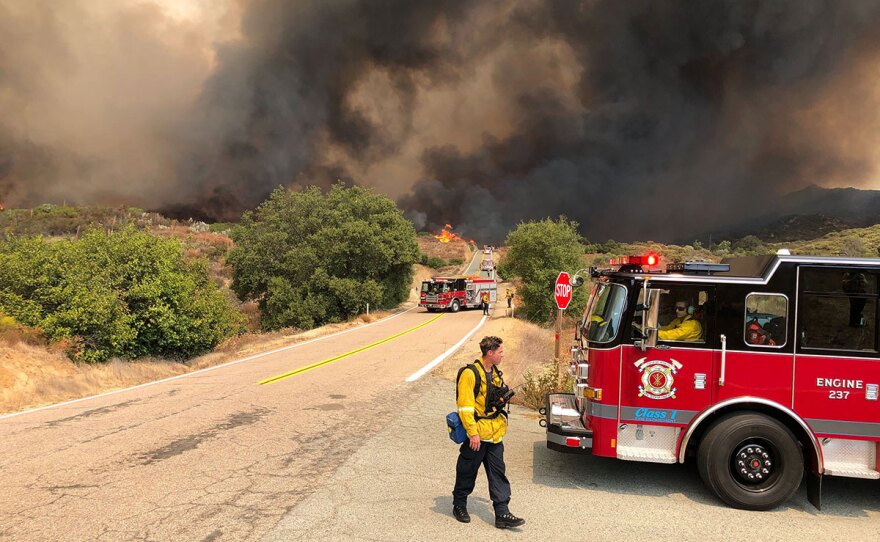New climate research, which was done mostly in San Diego, finds that a study of land temperatures during the last ice age confirms some widely held thoughts about climate change.
Lead author Alan Seltzer, a paleoclimatologist at the Wood’s Hole Oceanographic Institute, studied ancient water as a way to gain insight into previously unrecorded planetary temperatures.
Working out of Jeffery Severinghaus’s Scripps Institution of Oceanography lab in La Jolla, Seltzer analyzed the composition of ancient groundwater from San Diego and other locations around the world.
“A huge amount of the land surface of our planet, like about a third of the land surface of our planet, contains ancient water that fell down as rain or entered the subsurface as river runoff during the last ice age,” Seltzer said.
RELATED: Climate Advocates Push San Diego’s Sempra Energy For Change
After chemically dating the water using radiocarbon techniques, researchers measured the amount of the water’s dissolved noble gasses. They compiled data from every continent except Antarctica.
“Noble gas paleo temperature records are so powerful because they are based on a physical principle and are not much influenced by life — which always complicates everything — or by short-term extreme events,” said co-author Martin Stute, a researcher in the Environmental Science Department at Barnard College and an adjunct senior research scientist at the Lamont-Doherty Earth Observatory.
That technique allowed researchers to extrapolate the planet’s temperature during the last ice age.
It also confirmed findings that determine ocean temperatures during that time, giving scientists more confidence in models that predict climate change.
“It places a little more confident in models from a longer-term climate perspective well beyond human observation,” Seltzer said.
Researchers can say, with more confidence, what the land temperature will be based on how much carbon is in the air.
“The most important thing that it tells us is that the models are actually on the right track and we can believe the models more than we used to be able to believer them,” Severinghaus said.
RELATED: San Diego Supervisors Chart New Course For Climate Action Plan
Previous work has seriously underestimated the climate sensitivity to greenhouse gasses, according to Severinghaus. Climate change could be more destabilizing than current forecasts predict, he said.
“The rather high climate sensitivity that our results suggest is not good news regarding future global warming, which may be stronger than expected using previous best estimates,” said co-author Werner Aeschbach, a researcher at the Institute of Environmental Physics at Heidelberg University, Heidelberg, Germany.
“In particular, our global review reinforces the finding of several single noble gas case studies that the tropics were substantially cooler during the last glacial maximum than at present. The unpleasant implication for the future is that the warmest regions of the world are not immune to further heating,” he said.
The findings are published in the current edition of the journal Nature.







